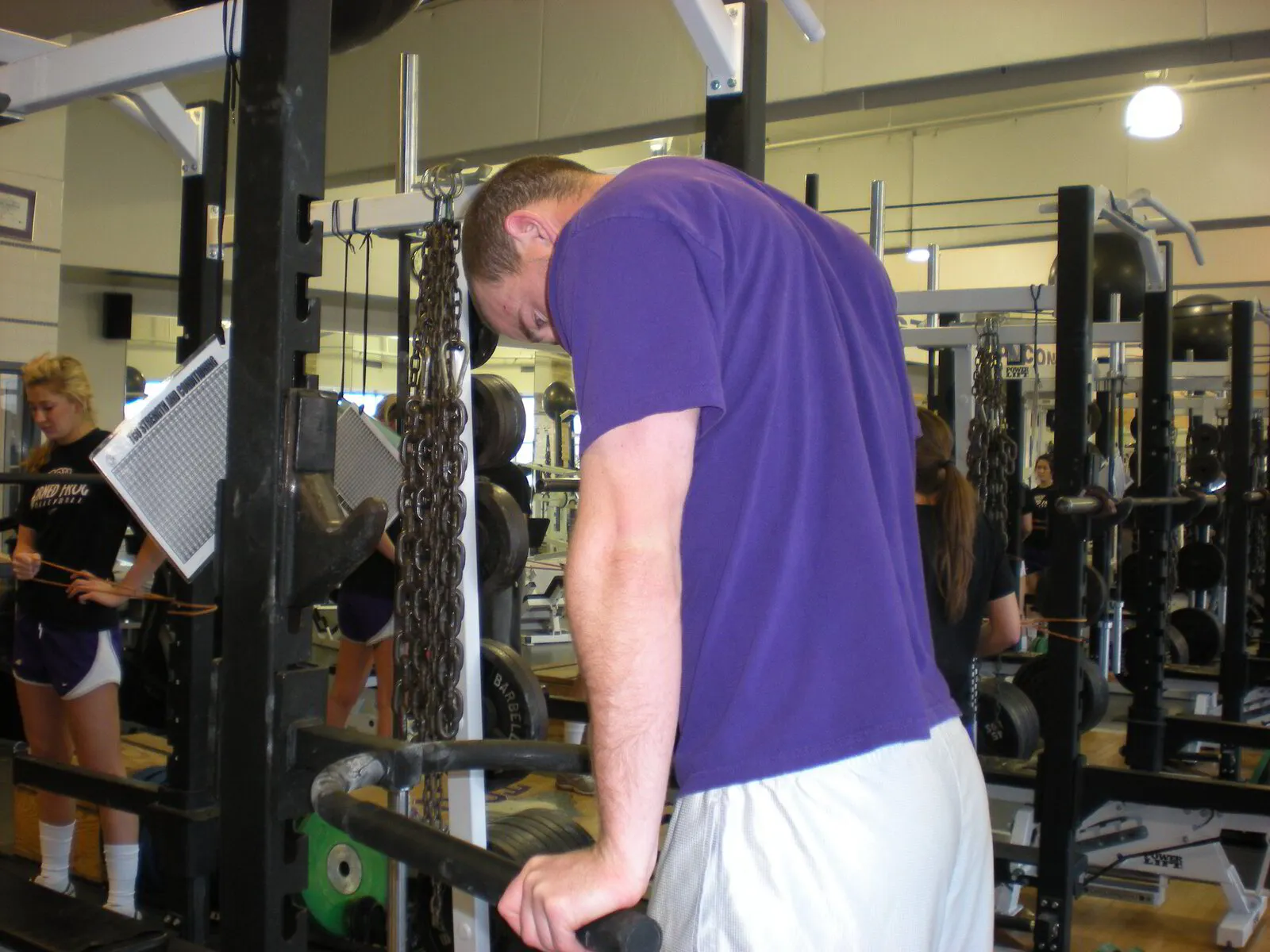A great movement for training scapular depression is the scap dip. Scap depression is extremely important for shoulder health as well as stability. Depression helps to keep the scapulae out of a rounded over, and pulled forward position. The pec minor as well as the lower trapezius are responsible for scap depression. Often, the lower trap is inhibited, and has been lengthened through training, or as a result of lifestyle. Any work we can do activate the lower trap is important. When we do pulling movements we want to emphasize not only retraction but depression as well. I touched on the importance of that in a post found HERE a few days back.
Scap Dip - Bottom
An important muscle that often gets left out of scapular health is the lats. The lats can play the role of the devil as it is an internal rotator of the humerus. However, in the case of the scap dip the lats assist in scapular depression as well. By focusing on depression we can even out the pull exerted upward by tight levator scapulae, and upper trap, as well as the rounded posture possible with tight pec major / minor. With this posture comes an increased risk for shoulder problems, and instability.
Scap Dip - Top
Again, it's important to focus on technique when utilizing scapular movements. A perfect example is in the top portion of the scap dip. If poor technique is used the scap will move into anterior tilt at the top of the motion. The movement is now completed by the pec minor. This takes out the lower trapezius and actually puts it on stretch rendering it useless. We know that the pec minor is commonly a tight, overactive muscle. We don't want to make it any shorter causing a natural anterior tilt of the scapula, again putting the shoulder at risk. All too often athletes don't maintain proper technique throughout the scap dip to gain any true benefit.
Don't let your athletes do this at the top
Athletes have to make sure they keep a tall chest throughout the scap dip and the shoulder blades pulled back and driven down to complete the movement. This will fully activate the scapular depressors, which is what we're after in the first place.



